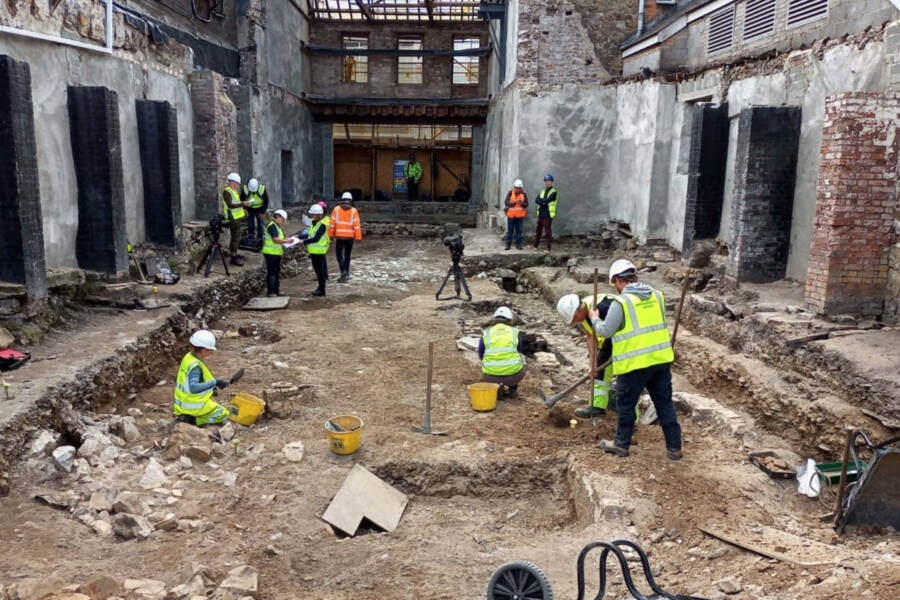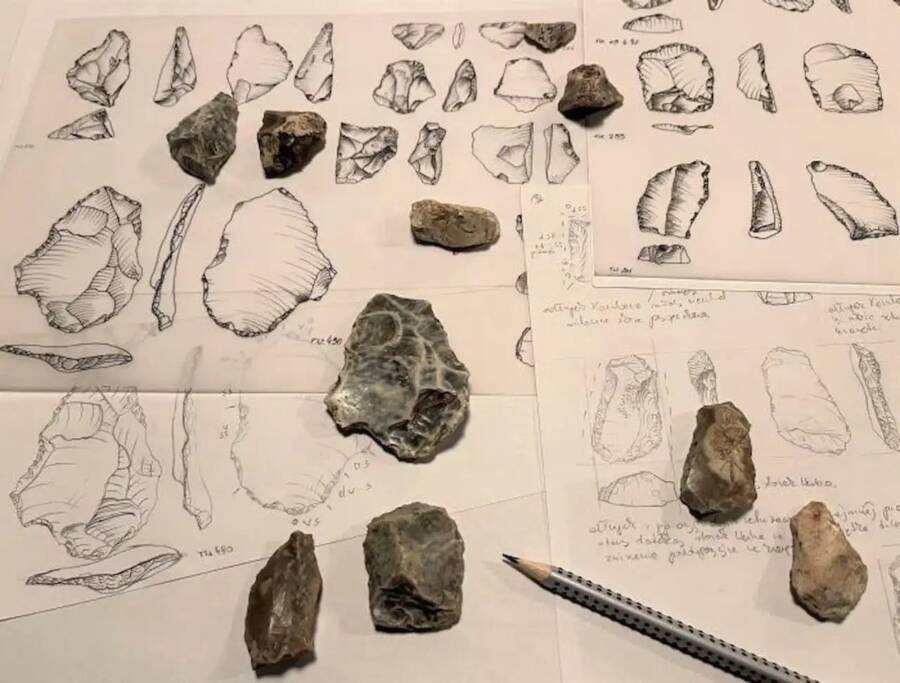Roman mosaic unearthed in Syria, 300 medieval skeletons found in Wales, tools made by human ancestors 500,000 years ago discovered in Poland.
Enormous Roman Mosaic Depicting The Trojan War Uncovered In Syria After 1,600 Years

Omar Sanadiki/AP PhotoThough a gargantuan 1,300 square feet of mosaic have already been uncovered, experts believe that it also stretches underneath the surrounding buildings and that the complete piece is “far wider” than what we can currently see.
For years during the Syrian Civil War, opposition forces controlled several swaths of territory that contained invaluable historical relics and treasures. Among them was the ancient city of Palmyra, a UNESCO World Heritage Site featuring 2,000-year-old Roman-era colonnades, the shrine of Baal Shamin, and the Temple of Bel. Vandals not only destroyed numerous sites, but some even stole relics and sold them on the black market.
Now, archaeologists in Rastan have just fully uncovered a Roman mosaic dating to the fourth century C.E. that was also once under control of opposition forces. In fact, local opposition leaders tried to sell the mosaic on social media in 2017. However, the area came back under government control the following year and the mosaic has now been surveyed by archaeologists who plan to preserve it and see just how far it extends underneath surrounding buildings.
Discover the full story behind this astonishing find here.
Archaeologists Just Unearthed Nearly 300 Skeletons Beneath An Old Department Store In Wales

Dyfed Archaeological TrustIt is rare that discoveries of this magnitude occur in urban areas, according to the team behind this find.
A team of researchers excavating the site of an old department store discovered several hundred human bodies buried beneath the dirt, possibly signifying that the site was once a friary during the Middle Ages.
In total, archaeologists have found around 280 individual skeletons, some of which were only tiny babies. They believe the site was once St. Saviour’s Friary, which was founded in 1256.
Dig deeper in this report.
Archaeologists In Poland Find Evidence Of Tools Used By Extinct Human Ancestors Half A Million Years Ago

M. KotThe artifacts were much older than previously thought.
For millennia, the depths of the Cave Tunel Wielki in Małopolska, Poland contained a long-lost echo of our ancient human ancestors. Polish researchers have determined that a previously unexplored layer of the cave contains evidence of flint tools made by the extinct human species Homo heidelbergensis some 500,000 years ago.
Read on here.





